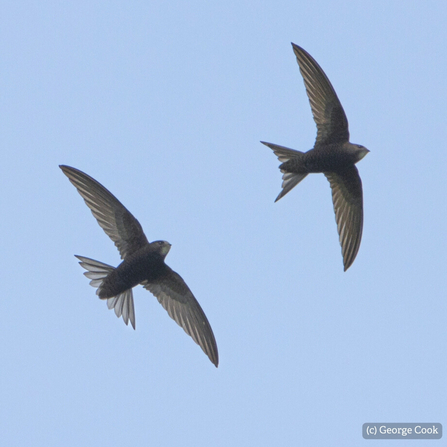If you hear a high-pitched scream from overhead this summer, look up and you might glimpse a dark scythe-shaped bird with long wings, cutting through the air in large screaming flocks. The swift. A bird that just a few weeks ago was soaring across the Sahara desert, charging across the Congo and motoring across the Mediterranean as it makes it return to our island home to breed.
Towards the end of April, swifts start to arrive back on our shores after flying all the way from Africa, returning to the very same site they nested last year. The whole time they have been away, the birds will have been continuously flying! They do everything whilst on the wing, including eating, sleeping and even mating. Their latin name ‘apus apus’ translates as ‘without foot’ as they only ever land to nest and start a family. This means that if you are lucky enough to have swifts nesting in in your building, they have chosen that place as potentially the only spot they will ever land. How special!



